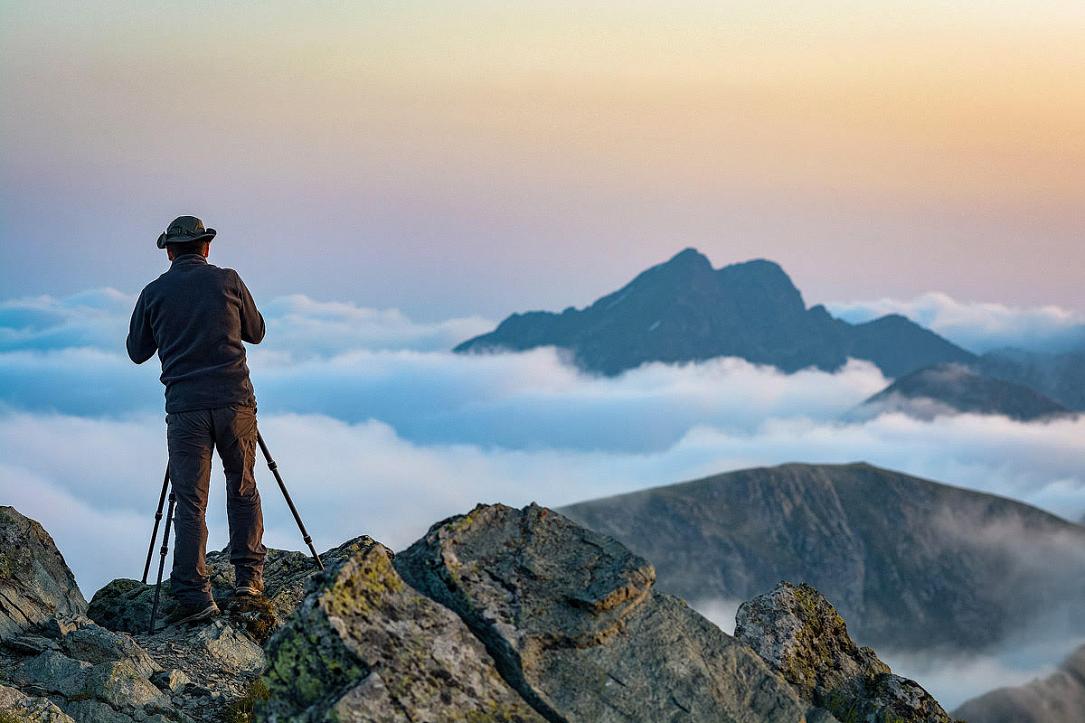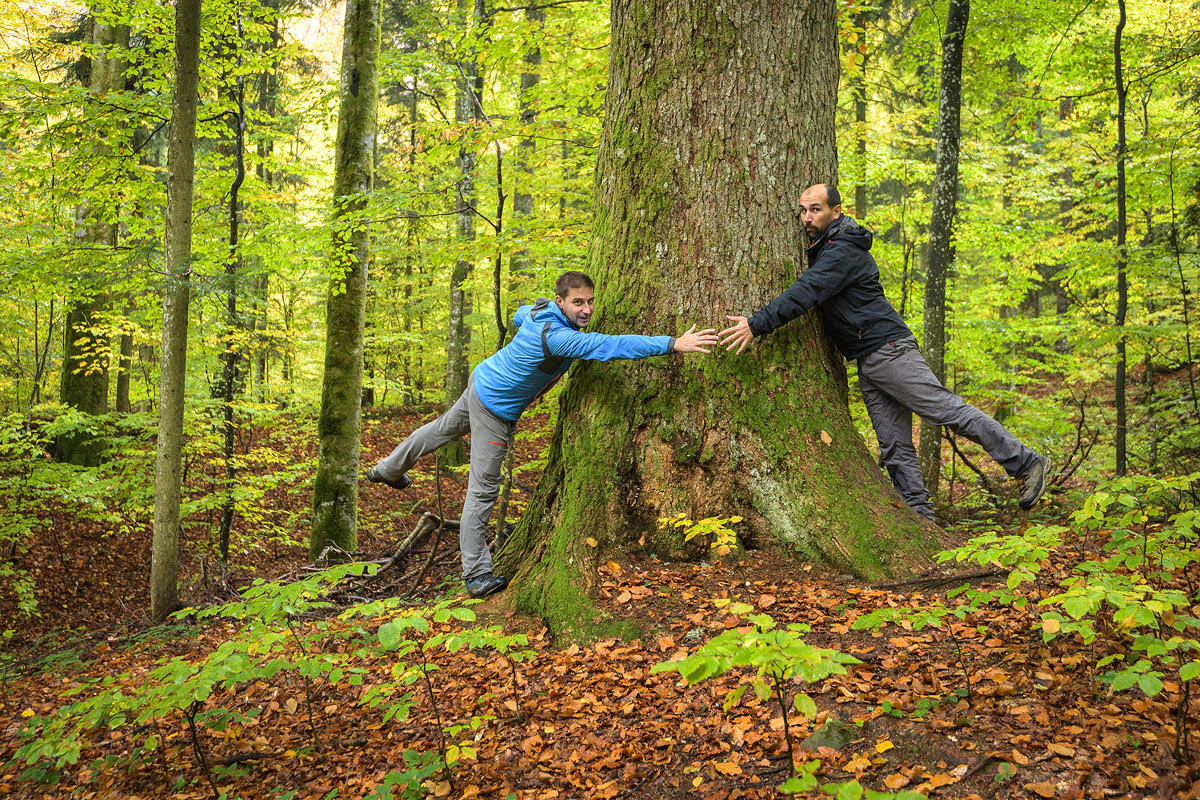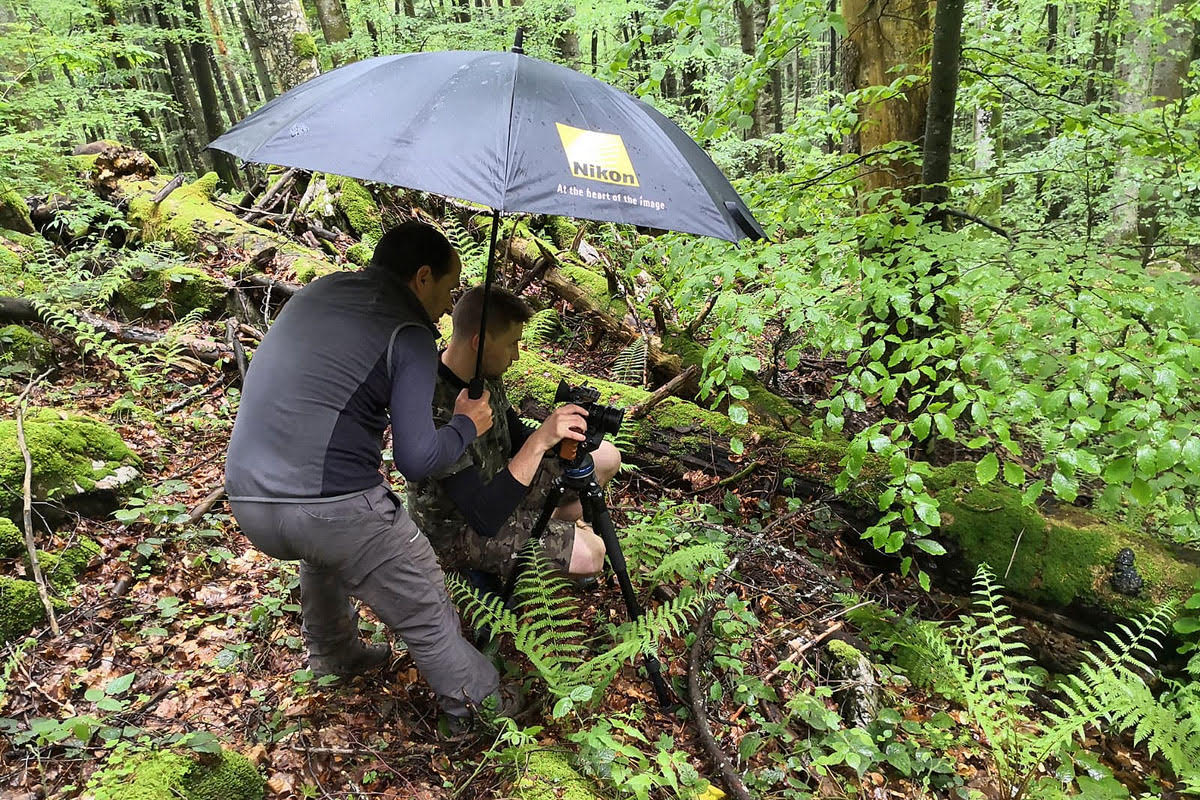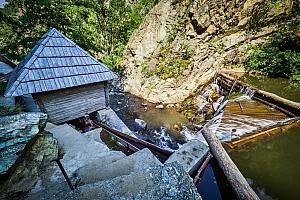Extensive photography & documentary project captures Romania’s nature and wildlife

Eleven years ago, photographer Dan Dinu started capturing the country's major protected areas for a project called România Sălbatică (Wild Romania). It meant ninety trips and more than 450 days in the field, capturing various landscapes and wildlife in what has been named the largest photography and film project dedicated to the country's biodiversity so far.
As part of the project, the photo book România Sălbatică was recently released, and a documentary film is to follow soon. In the interview below, Dan Dinu told Romania-insider.com more about what the work the photography project entailed and what the public can expect from the upcoming documentary.
Twenty-eight major protected areas – national and nature parks, geo-parks, and biosphere reserves – were covered by the project, which generated many ideas along the way. But the idea of the photobook was there from the very beginning. The book, which includes information about local nature, invites the public on a "journey through the country's natural beauty and diversity." As the project has an educational purpose, a large part of the print run is donated to 500 public schools and libraries.
For Dan Dinu, the project entailed traveling to remote areas, seeing hard-to-spot animals, and encountering tens of people dedicated to nature conservation, all the while seeing the community around the România Sălbatică project develop continuously. Several photos from the project are available here. After videographer Cosmin Dumitrache joined the project, the two developed documentary series meant to introduce viewers to lesser-known areas in Romania. Starting 2018, they started working on a documentary showcasing the country's nature in a new light, set to be released soon. More about the work on the project below.

How did the idea of the project emerge? How does it connect to previous experiences and the interest in wildlife photography?
The idea of the project started in 2009, when I was writing an article for Photo Travel, a nature and travel photography magazine, about our national and nature parks. I realized then there weren't enough nice photos of these reserves, and some of the areas were not known at all. I didn't think this was normal, so I started together with WWF Romania this project one year later. At first, I focused especially on the photography part, and for two years, I covered the country and photographed all the 28 major reserves existing at the time. The project would have warranted the effort of a team of photographers, but at that time the community of nature photographers was not only rather small but also not united enough.
It was crazy plunging like this into such a large project, and I cannot say that I was experienced enough at the time, but I learned very many things along the way. Although I had done several smaller photography projects, this was about to test my time, patience, and perseverance. I can say it strengthened even more my passion for photography and made me love nature even more.
Today, such a project would look completely different, especially if all the colleagues from Forona, the organization of nature photographers in Romania, could contribute. Maybe we will do a sequel involving more photographers.

How was the work on photographing the grand reserves of the country? Did you leave room for the unexpected?
First of all, we wanted to cover all the national and nature parks, this was our initial list. For the species part, we had considered many but here things were a bit more complicated. By the end of the project almost all the things we thought about initially happened. There was unpredictability at every step; when you work in nature, you never know what to expect.
Were there situations when you felt less safe? What about places or species more difficult to capture?
I think we could do a film only about our adventures in the field. You cannot spend so much time in nature without a lot of events. I don't think we had truly difficult moments, the kind that make one feel in danger. It's true we were caught by a flash flood in Ponicova Cave, in the Iron Gates Nature Park, where we spent a few hours waiting for the water level to go down so we could get out safely, or we crossed difficult parts in the ridge of Piatra Craiului or Făgăraș while carrying a lot of equipment on our backs and in extremely rainy weather, but we fared well in the end.
As for encounters, the best ones were with the animals. If in the first years we barely had several photos of animals, lately we made considerable progress and have managed to photograph and film many interesting species. I remember how, at the height of the lockdown, we saw no less than 15 bears in two days in Putna-Vrancea Nature Park. We wanted to capture, especially for the film, also sequences that people have never seen or do not know, so we followed a few hard-to-see and photograph animals. For the golden eagle, my colleague Cosmin Dumitrache spend many hours perched on some cliffs in Trascăului Mountains, and to capture a bit of the secret life of the lynx or the wolf, we set up more than ten movement sensor cameras in Brașov, Putna-Vrancea, Baraolt, Leaota, Bacău or Piatra Craiului. These cameras were on continuously for almost two years, but only in the last season we managed to capture some truly valuable moments. As for photography, everything seemed to connect right on time to complete the photo book. The photo that was most difficult to take, a lynx roaming freely that stood only a few meters away from us, came only a week before the album went to print. And after 24 hours of waiting in the cold, at the height of winter and after many other days of unsuccessfully attempting a photo. I can say we were fully rewarded with spectacular moments when nature showed us that, if you persevere and respect it, you have only to gain.

In a presentation on the project's website, you describe the photobook as "an homage to our nature and especially to our biodiversity." Seeing and revisiting the big reserves over ten years, did you notice changes in the way they are kept or on how we relate to them?
I couldn't say that I noticed major changes, although my colleagues from NGOs and park administrations are making great efforts for things to run at their best. As long as we don't adjust the legislation, it's hard to leap ahead. There were even steps back, especially when NGOs lost the custody of some protected areas after a legislative change. What I did notice was an increase in the community getting involved in protecting nature and perhaps of the number of nature lovers. Maybe our project played its part, at least within the very large community that formed around it.
What do you hope those who get the photo book will be left with?
With a wish to explore. Although the photo book is a trip in itself, let's not forget we should not admire nature in a book but try to see it live. We will understand much more about the surrounding world and be more involved in protecting it.
Do you have a favorite photo or more from the book? One that entailed more work? A favorite area among those captured?
It's difficult to answer this question; it's like asking a parent who their favorite child is. It's complicated to make such a ranking, especially because I look at this photo book as a whole. I am probably more connected emotionally to the lived experience and maybe less to the image itself. For this reason, I can say I am very fond of the photo of a chamois sitting next to its calf, taken at the start of the project, and of the one with the lynx from the end of the project. My career as a wildlife photographer developed between these two photos.
As for areas, I would go anytime to Piatra Craiului, the Iron Gates, Domogled, Ceahlău, Apuseni Mountains, or to the Danube Delta- this just to search for some preferences, although I am very fond of exploring new and lesser-known areas.

What can you tell us about the documentary? Where was it filmed? How did you select the areas and stories included? Did you have a particular public in mind when making it?
The story of the film is the story of nature in Romania, told both from the perspective of some animals but also of some areas or moments. What we did not like so far with the few films of the genre made locally was the fact that they lacked the personal touch, and the viewers watched distantly. We would like our film to get viewers involved in the stories, get them to recognize places, and identify with situations.
The narrative of the film showcases nature from the perspective of the seasons. We start in winter and return to winter. We have stories about animals trying to find a mate, raise their young, or simply survive in Europe's wildest country but, at the same time, we have stories about certain places that make Romania unique. We have sequences that haven't been filmed professionally before here, we have drama, we have comedy, we have all the pluses such a film needs. And every story will join fluently in a single whole, trying to gather in two hours everything beautiful in the country. And there is another aspect to mention here, everything in the film will be authentic. All filming was done in Romania, with wild animals roaming freely. Even though we used the specialized observatories from where we filmed, we tried to keep an impeccable ethical behavior. If you love nature as we do, it couldn't have been done otherwise.
We filmed all over the country, from the shore of the Black Sea to the heart of Transylvania with its soft hills, from the peaks of Făgăraș to the riversides of the main water flows or the meandering channels of the Delta. We really tried to cover as many areas and landforms as possible without ruining and crowding the story. It is a film anyone can enjoy, without being confined to a certain public. Children will greatly enjoy the sequences with foxes or badgers, while the grownups will understand the drama and the connections that nature offers. Regardless of whether one is a nature fan or a specialist, they will find in the film a part that they did not know about or didn't look at the way we thought about showcasing it.
What did the work entail? Were there more challenging aspects to overcome?
Not losing our focus was definitely one of the challenges. We want to do quality work, so we constantly tried to challenge ourselves during filming not to get bored and do things just to have them done. Although it was complicated, because throughout this period we had to perform our regular activity that supports us financially, we think we did a good job. Maybe if the project had a matching budget, it would have been completed sooner, but this way we had more time to learn and grow with it. It was a continuous evolution.
Towards the end, things worked out extremely well, and now we really have a professional team on the music, sound, coloring side and all else needed for the film to be at the standard we always wanted.
What perspective did the revisiting of sites bring, given the work to the previous series?
A comparison is almost impossible, the approach for the film was completely different. For the series, we went filming without a very clear plan, and we improvised according to the situation. With the film, we had a much more structured script that we followed. Nonetheless, we still had to improvise and adapt because in a documentary you constantly need to adjust according to how moments and stories are offered to you. The experience of the series helped us be more organized and orderly, and the future project will certainly be easier to go through given how much we learned in the meantime.
Where can the documentary be seen? Are you considering online distribution?
For the time being, we are planning a cinema release, then a caravan with screenings around the country, and in the end, an online distribution that would be available to anyone. Besides the cinema version, which runs for about two hours, we are also working on a three-part English-language version, which was designed to be broadcast on television outside of Romania. Of course, we can adjust these versions depending on needs and requirements.
What do you think the photo book and the documentary can mean in the context of the pandemic, when we travel less?
The pandemic made us appreciate tourism in our country more and, even though some areas were under great pressure, very many people understood the value of Romania during this period more than ever, especially those who usually holidayed outside of the country. I hope the film and the photo book will strengthen the idea that we have an extremely valuable country when it comes to nature. On the other hand, I hope our project will help raise awareness of the fact that all this nature richness will only endure if we learn how to truly protect it.
What’s next after România Sălbatică? What projects do you have planned or would like to tackle?
It's really hard to think about future projects when you have such a significant one nearing completion. We have other ideas for films, as well as ideas for photography projects but I don't know which one will come first. It will certainly be one that keeps the uniqueness and the educational idea of România Sălbatică. I like to think that the projects we engage in will help change dusty mentalities and set an example for those who wish to get involved in this field. After a project that lasted more than ten years, it will probably be challenging to find something as grand … but not impossible, I'm sure.
România Sălbatică photo book is available for purchase from the Photosetup store in Bucharest or can be ordered from Photosetup’s online store.
(All photos courtesy of Dan Dinu)
simona@romania-insider.com
















